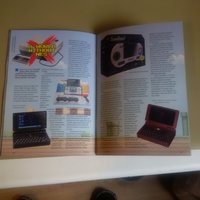Because nobody thought this could ever be a problem. Just blame TI for a crappy and not well documented SoC or something like that. If you build an SoC you have to guarantee certain specifications or warn to use XY specs like 4GB RAM. I would do so at least to prevent frustrated customers.
...
We know all the long lead times, I doubt ED already has all RAM purchased. So it may be a good idea to cancel some 4GB module orders in advance.
(Large throat clearing sound...)
Yes, there were a few of us spoke up loudly against making changes to a known working setup to appease the spec chasing associated scope creep. There was rock solid proof that 2GB works reliably with the SoC in the form of development boards. Users of those boards had shown beyond doubt of anyone who was paying attention that 2GB of RAM was well matched the the capabilities of the SoC and 2GB was well suited to any task appropriate to the platform. More would not be much 'better' beyond a number to quote.
There was also another encampment with louder drums, a mob, and pitchforks claiming that anything less than 4GB was a fail. At one point there was even an ask for 8GB RAM from the same contingent.
I think at one point ED said that there were some 512MB modules (4=2GB) and a lot of 1GB modules (4=4GB). That is likely where the 80K EUR is sitting. I don't think everyone realizes how much of the Pyra production parts are already on-site at the board population company. It is likely a fairly substantial fortune. Nubs, eMMC, RAM, SoC modules - I'm pretty sure all of those expensive parts have been purchased and staged. So, changing to another part or nixing a part is a substantial expense.
4GB RAM was declared a go, ED took pre-orders for it, here we are. I hope that the current 4GB issue is another O vs 0 or 8 vs B setting issue that is easily solved once found. I would encourage the team to continue trying to find it. But, in the meantime, please build & ship working 2GB units. Pyras need to exist in the wild soon or the ecosystem will slowly die.




